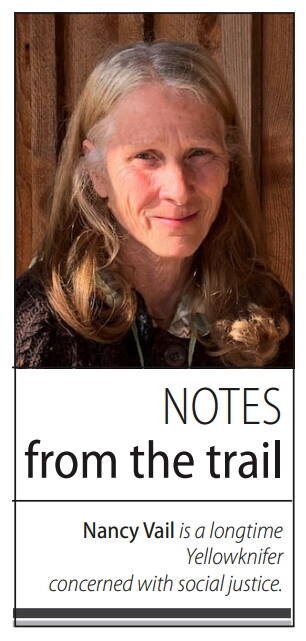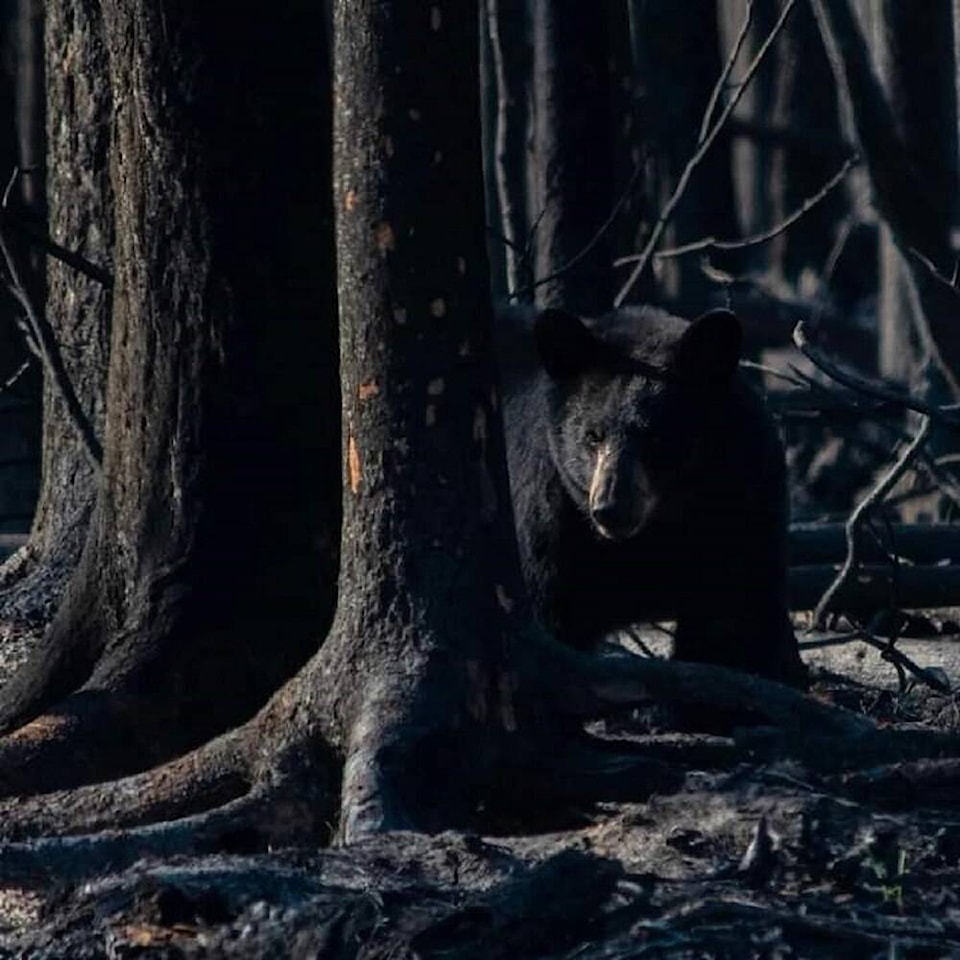It is one of the most poignant yet tragic pictures that emerged from this summer’s wildfire. It was taken near Hay River — a black bear peeking out from charred tree remains. It is all that’s left of the forested area that was that species’ home for years, if not centuries.
Similarly, 75-year-old trapper Richard Mercredi from Fort Smith said he doesn’t expect to be around when the new growth in that area starts to return, which is expected to be 15 years from now. He said that the fire burned so hot, fast and hard that nothing is left except gravel. There is no soil for new growth to sprout on. It could be several decades before the beginnings of poplar trees are seen again.

Throughout this fire, our own species has been concerned with its own survival and well-being, but there are many others who were wiped off the map in certain areas of the burn, dying in the most tragic ways possible. A few bears and moose with scorched hair were the only animals fire fighters saw trying to escape the flames, but most were lost.
Mercredi said that the rabbit population had just started to come back following the 2022 burn, but now they have disappeared altogether along with the marten and lynx populations. They are completely gone. Mercredi said moose and buffalo were likely confused by the smoke and thus perished along with the trees and bush.
Although a herd of about 50 buffalo have been spotted near Pine Point, he said that most of the animals in the Wood Buffalo National Park area likely burned.
They didn’t stand a chance.
The long-time trapper points a finger at the Wood Buffalo staff who saw the fire when it first started. They followed their ‘let it burn naturally’ policy which, he says, proved disastrous during this unprecedented drought.
By the second day, the fire had grown exponentially but by the third, strong winds whipped it into a frenzy, pushing it 27 km in one day. All told, more than 500,000 hectares of land was lost in that fire which will most likely cost millions of dollars to extinguish.
The job could have been done with a couple bucket loads of water flown in by helicopter on day one, he says.
And you cannot put a price on the animal lives lost.
Mercredi expects to do some modified trapping this year, if any at all. He said that even clearing a trail to his cabin could take a few years since debris from the fire will have blocked the way, making movement in that area almost impossible for both humans and animals.
He says in all likelihood, the only thing to trap would be the odd chicken, which is all people see in a place which used to be brimming with rabbits, lynx, marten and moose — all fallen victims to the summer fires.
And of course, the fire happened during nesting and birthing season, which means the young perished along with their parents.
Only water-based animals, such as beaver and muskrat, had a fighting chance, said Mercredi, though no one has been able to access that land for a better estimation of their survival rate.
It’s not just the fur-based economy from trapping that has been lost, he adds.
Wood Buffalo used to attract hundreds and hundreds of visitors annually from tourists wanting to see the lush green forests and the animals that live there. Now when you visit, you can only peek through charcoal tree stumps and see nothing but miles of rolling, blackened and naked hills.
Those hills, he concludes, will take decades to grow back and something many of us will not live long enough to see.
We have learned much from this fire season, most of which was how woefully unprepared we were to deal with wildfires, even though Northerners had been warned for years that fire would come and hit hard.
When it did, we did not have the expertise, resources or ability to mitigate the destruction and thousands of hectares of land and countless animals were needlessly lost, said Mercredi with great sadness.
Let’s hope we have learned and will respond more adequately next year.
